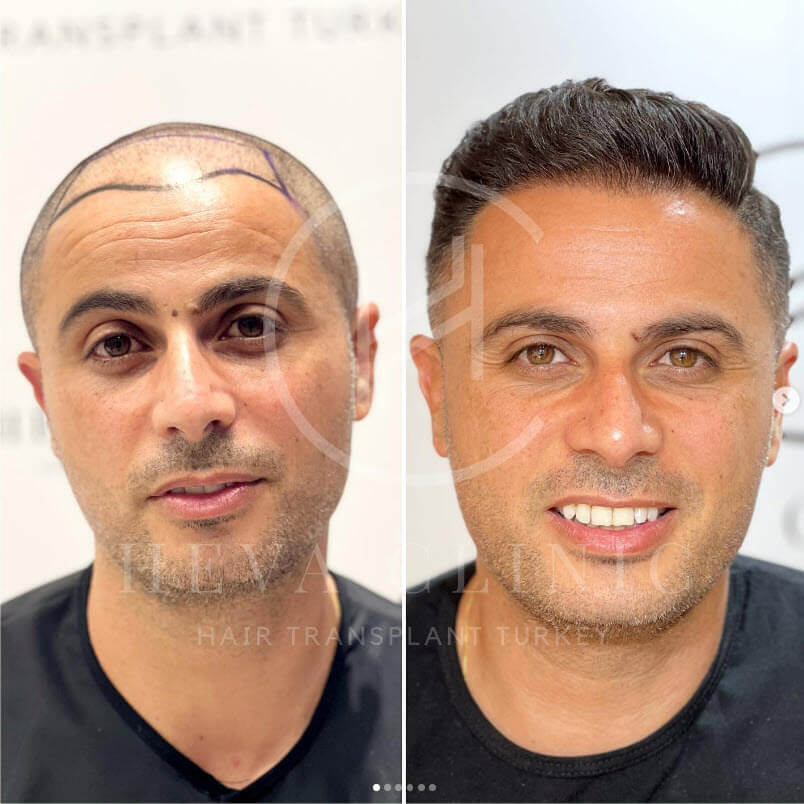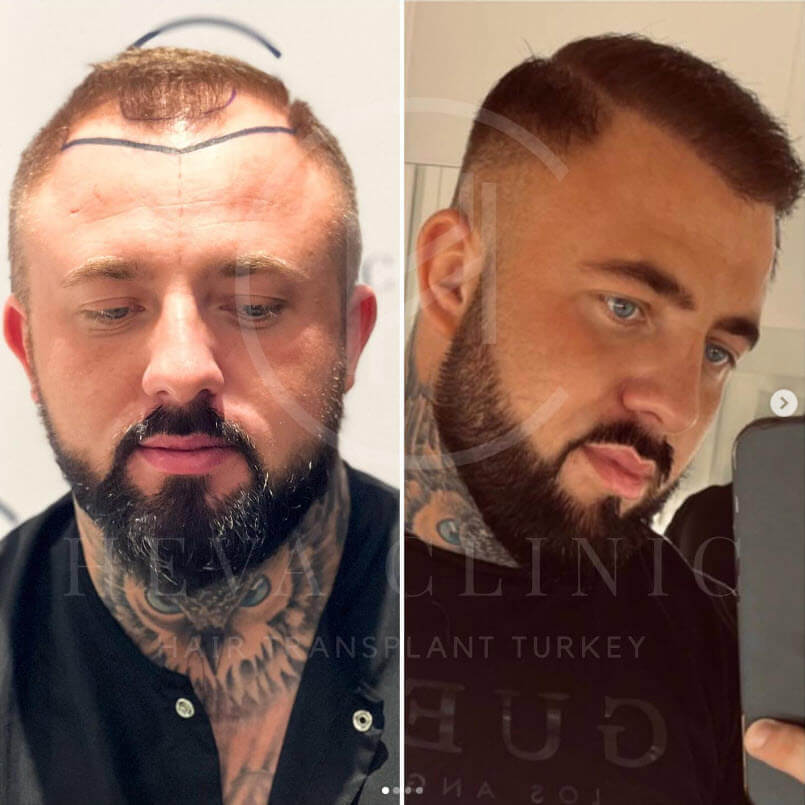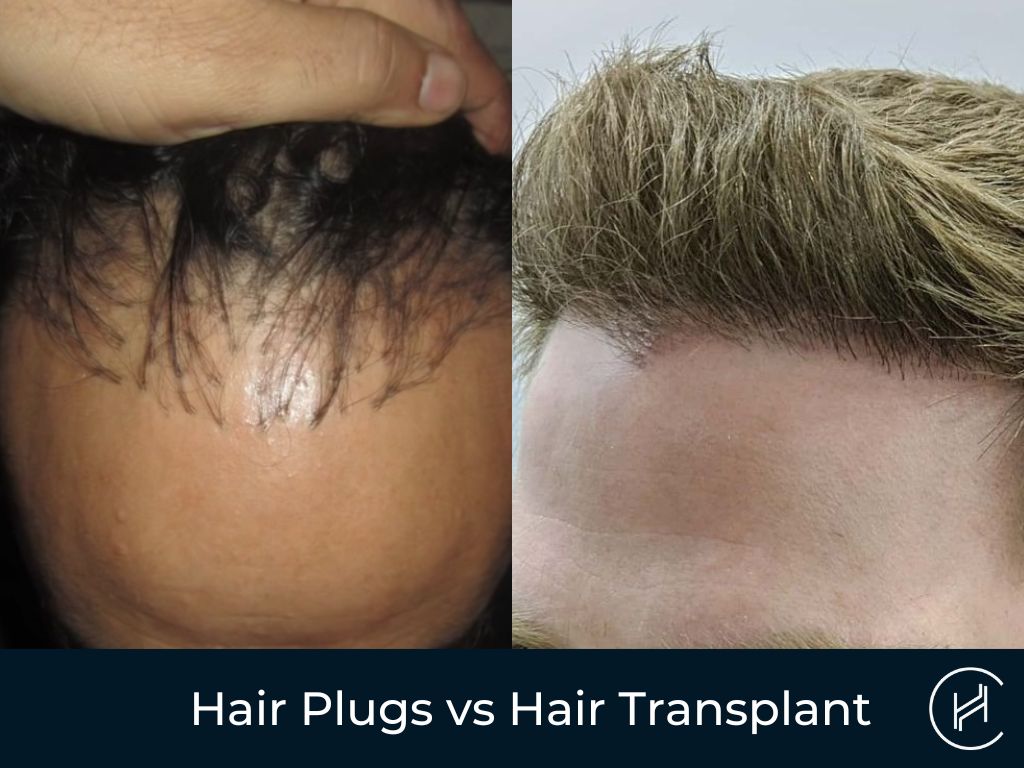
Hair loss is an aesthetic concern that is affecting the majority of men and almost the half of women in their lifetime according to the statistics. Male/female pattern hair loss can be triggered by various factors such as genetics, diseases, medications, and accidents.
Since our hair is a prominent feature, hair loss can decrease our self-confidence and affect our daily life; this is why a lot of people are looking for a satisfying solution to hair loss.
Hair plugs and hair transplant operations are widely known options for hair loss treatment. Do you know the differences between them? We’ve covered everything for you!
Are hair plugs the same as a hair transplant?
Even though hair transplant is a much more common terminology these days, some people may still want to see the comparison of hair plugs vs hair transplants.
Hair plugs are essentially the early version of hair transplant.
Both techniques are mainly based on the same principle: transferring healthy hair from a donor area to the affected/bald area of the head. However, they are different in terms of how they approach the problem. Hair transplant operations are much more sophisticated compared to hair plugs and provide more natural-looking results.

What are hair plugs?
Hair plugs are small patches of skin, containing over 20 hair follicles, transferred from the donor to the recipient area. Even though this technique uses your real hair, it results in an unnatural look because such a big patch of hair gives a “plugged” appearance.

What is a hair transplant?
A hair transplant is a commonly preferred solution to the hair loss problem. In a hair transplant operation, hair grafts are transplanted from a donor to the recipient area. Hair grafts are small units containing 1-6 hair follicles. People can achieve the desired density at the recipient area without damaging the donor area.
What are the differences between hair plugs and hair transplants?
Hair plugs and hair transplant operations have many differences including the cost, recovery period, natural look, permanency, and length of the procedure.

1. Cost
As hair plugs are less complicated than a hair transplant and are outdated treatment, they cost way less than hair transplant operations. Not many clinics offer hair plus procedure any longer in this decade. The cost of hair transplant procedures, on the other hand, can vary between $1,500 and $15,000 depending on mainly the location and expertise of the clinic.

2. Recovery period
Hair plugs involve removing a larger patch of skin compared to hair transplant procedures. Hence, hair plugs leave behind multiple larger incisions. On the other hand, hair transplant methods, such as FUE only involve micro incisions that do not require stitches and FUT involves a singular cut. This means that the recovery period after hair transplant operations is much easier and shorter.

3. Natural look
Without a doubt, hair transplant operations offer a much more natural look compared to hair plugs. The gaps between hair plugs lead to unnatural and undesirable appearances that nobody really wants anymore. Whereas, in hair transplant, it is possible to imitate the the density of the natural hair by using the right equipment and hair grafts.

4. Permanency
Both hair plugs and hair transplants lead to permanent results. However, hair plugs may lead to a lower success rate as the techniques are outdated and equipment are not as sophisticated.

5. Length of the procedure
Operation durations are almost the same for both options however to achieve your desired level of hair density, you might need more than one hair plug session. On the other hand, and FUE procedure can offer you up to 5000 grafts in one session, which is generally sufficient for an above average hair loss.
How did hair plugs evolve throughout the years?
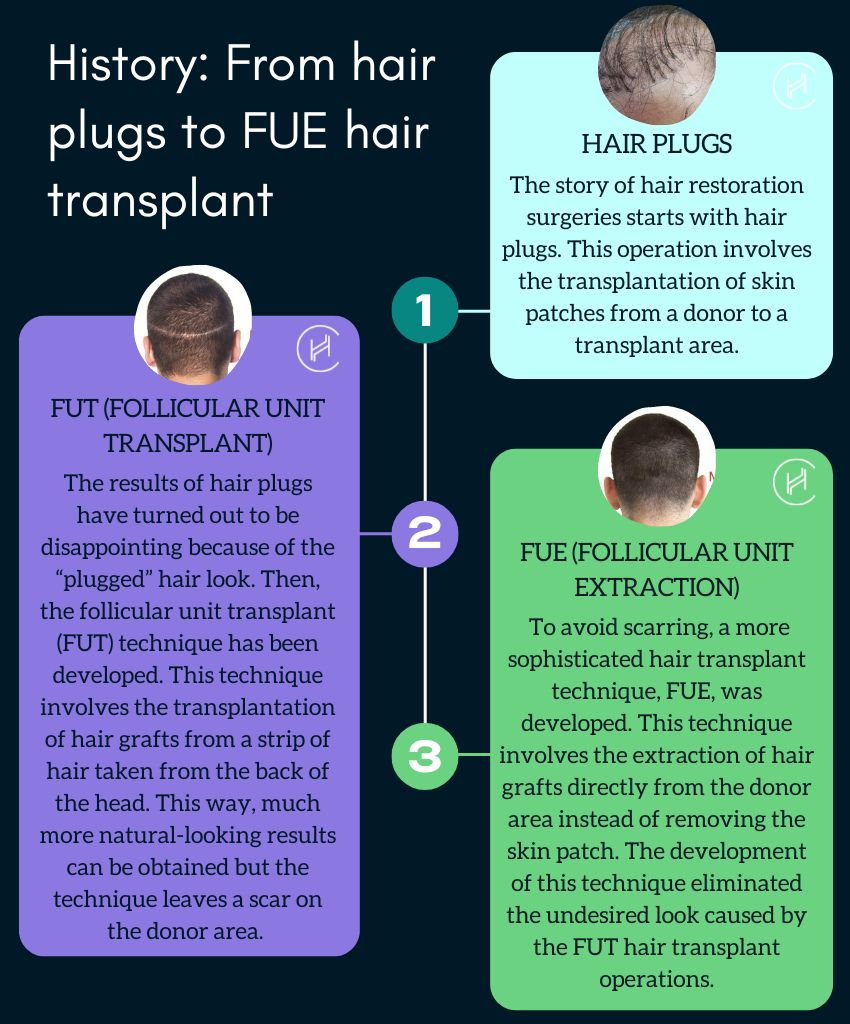
Who is eligible for the operation?
To be eligible for hair plugs or a hair transplant operation, you need to be in good general health and have enough hair in the donor area. People who have chronic illnesses such as blood clotting problems or diabetes might not be suitable candidates for these operations. You can consult with your surgeon to understand whether or not you are a good candidate.
Which one is a better choice for me?
If you have been wanting to find a long-lasting natural solution to your hair loss problem, a hair transplant is the way to go. Hair plugs are not recommended as they are outdated and lead to unsatisfying results. You can achieve a much better seamless appearance with a hair transplant operation.
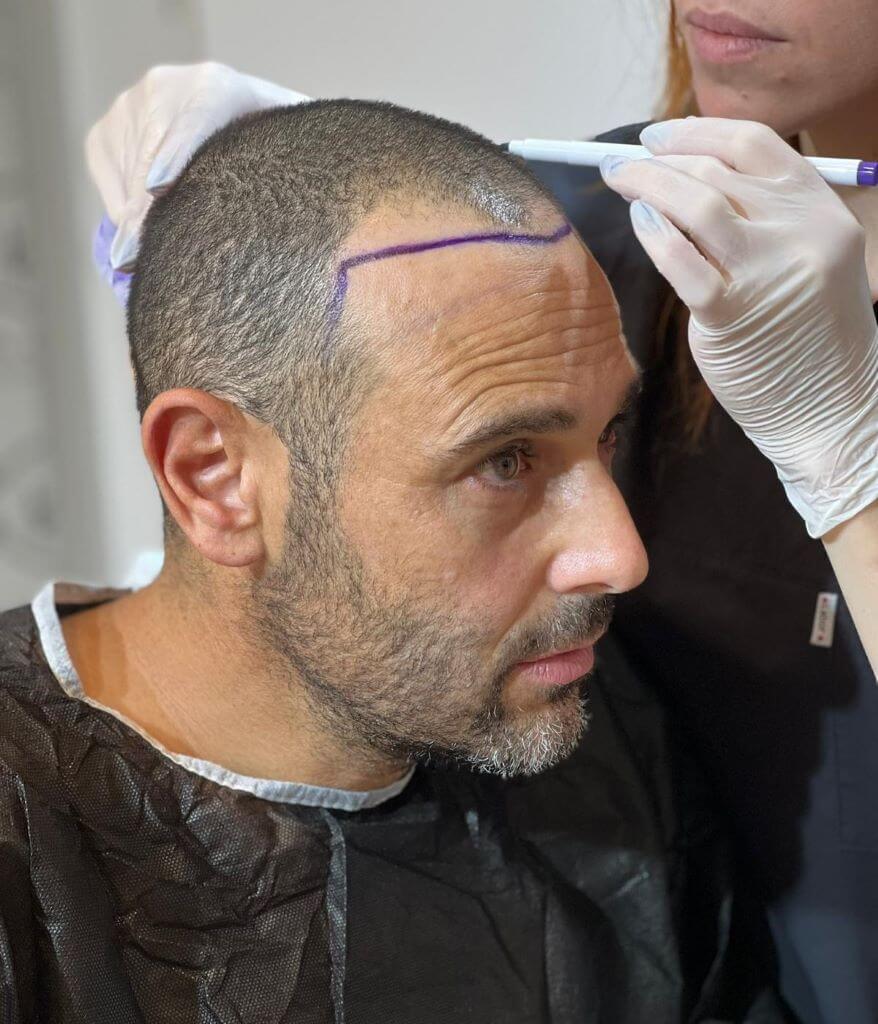
Can I get a hair transplant on hair plugs?
So, what happens if you got hair plugs before and are not satisfied with the result? You can get a hair transplant on hair plugs if you still have a sufficient amount of hair left in the donor area. Your surgeon can fill the gaps and create a much more natural appearance.
What are the side effects of the procedure?
Though rare, a hair transplant procedure might lead to some side effects. The most commonly experienced side effects are itching, sensitivity and scarring. These side effects are usually experienced in a short term right after the operation and fade away quick enough. Aside from these, you can experience numbness, folliculitis, and scar tissue formation. Numbness is usually experienced in the donor area and can take up to 4 months to get better. Folliculitis which is the inflammation of hair follicles requires medical treatment.





